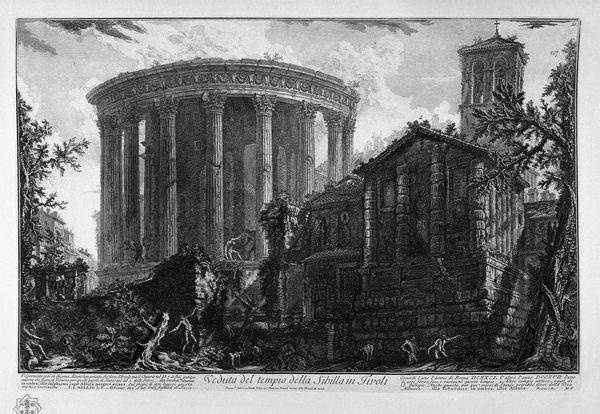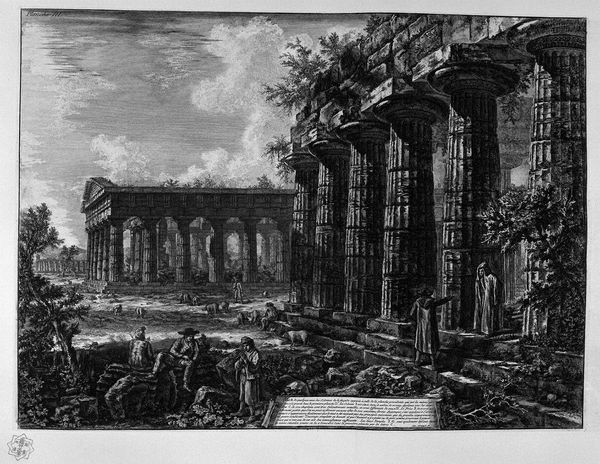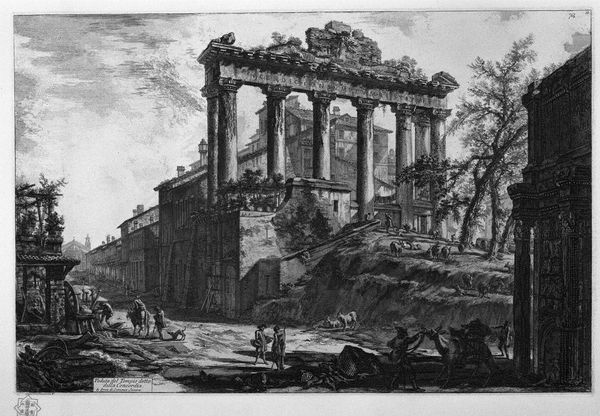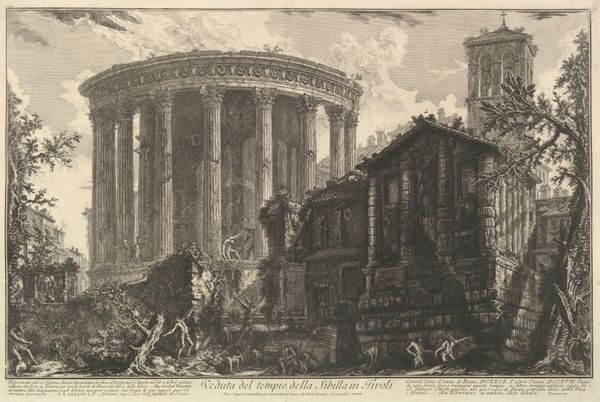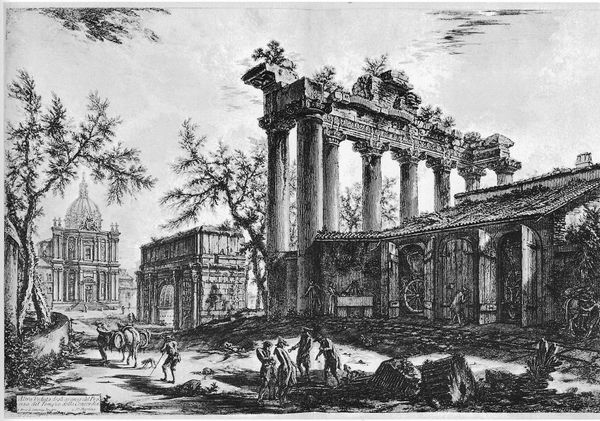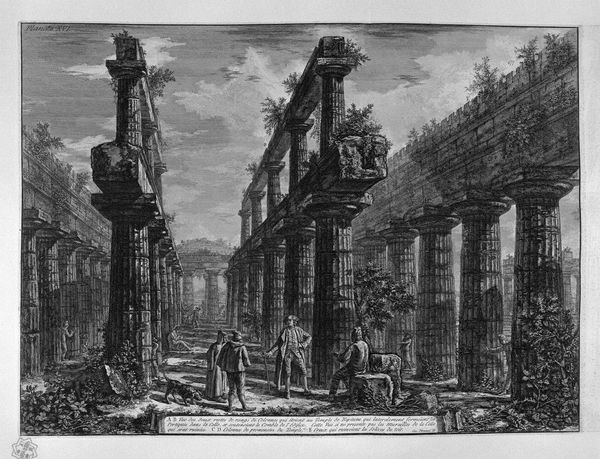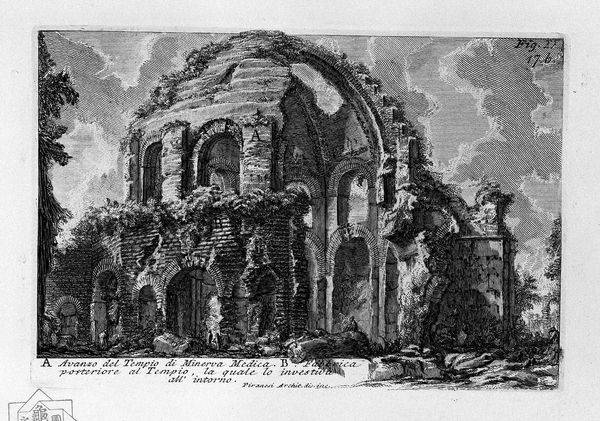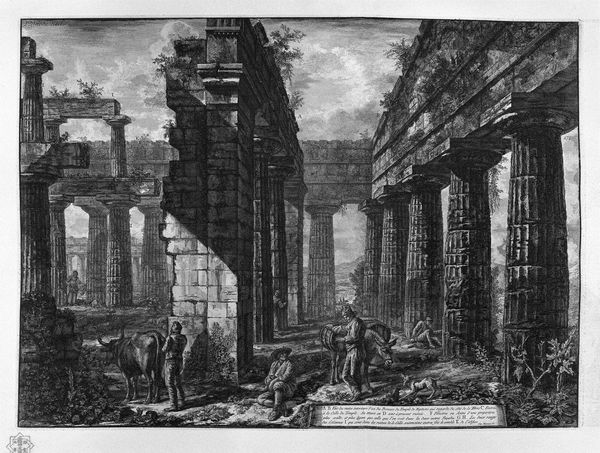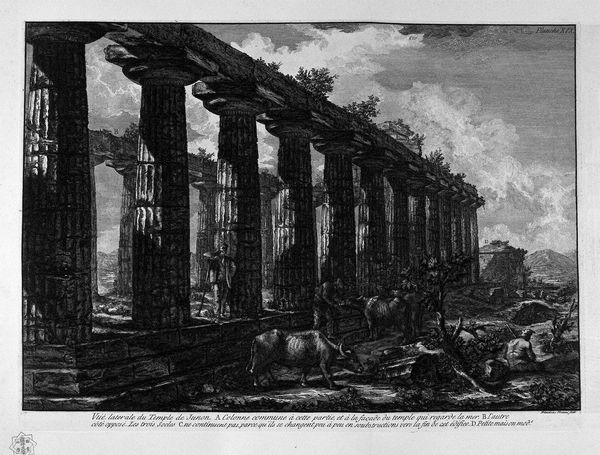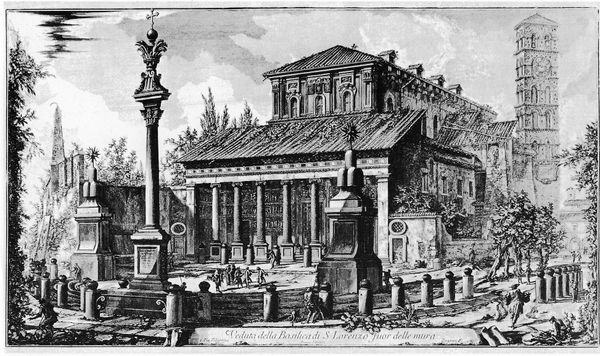
print, etching, architecture
#
baroque
# print
#
etching
#
landscape
#
romanesque
#
ancient-mediterranean
#
cityscape
#
italian-renaissance
#
architecture
Copyright: Public domain
Editor: So, here we have Giovanni Battista Piranesi’s "Vedute di Roma", an etching that depicts a dramatic Roman cityscape. It has such a haunting and monumental quality to it. How do you interpret the symbolism embedded within these architectural ruins? Curator: These aren't just ruins, they are deliberate visual allegories. Piranesi uses the grandeur of Rome, both past and somewhat present, to evoke ideas about power, decay, and the cyclical nature of history. Look at the way he positions figures dwarfed by the architecture. Editor: Yes, they do appear insignificant against those imposing structures! What does that signify? Curator: Well, how do these human figures function in contrast to the unyielding buildings? Do they reflect on resilience or impermanence? It is Piranesi suggesting that empires rise and fall, but the echoes of their existence remain etched in the very stones and in the visual memory of us. Editor: That’s a compelling thought! The detail in the etching itself almost feels like a memory trying to be preserved. Curator: Exactly! Piranesi is making a statement about the power of images to transmit cultural memory, even as the physical reality crumbles. How might we then relate these images to the political conditions that birthed them, the context that has been irrevocably etched onto them? Editor: I never really considered prints could contain so many layers of meaning! Curator: The “Vedute” are so much more than cityscapes. They’re potent symbols of cultural continuity and the enduring power of visual language. It makes you wonder, what will the ruins of our own era tell future generations? Editor: Food for thought! Thank you!
Comments
No comments
Be the first to comment and join the conversation on the ultimate creative platform.
